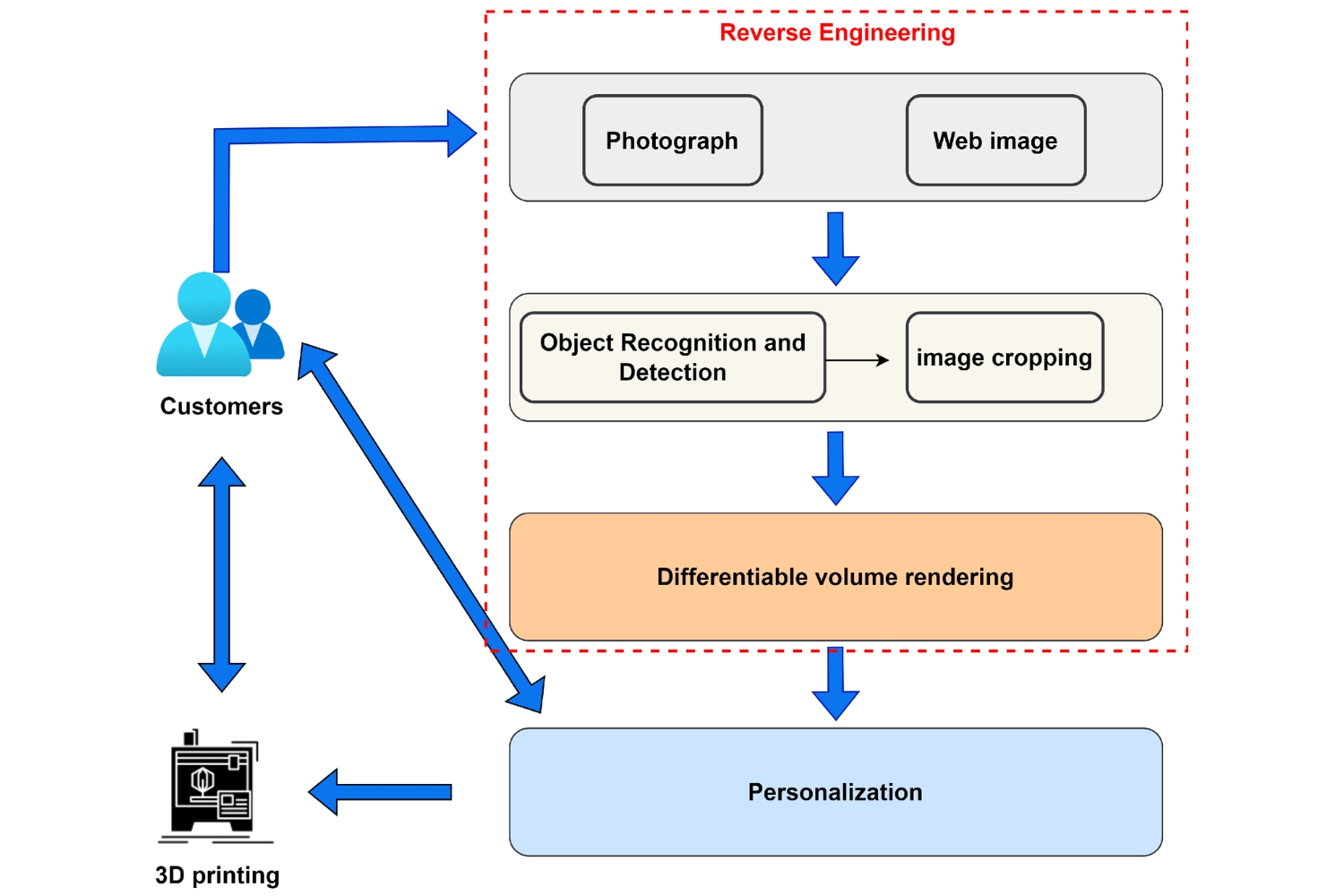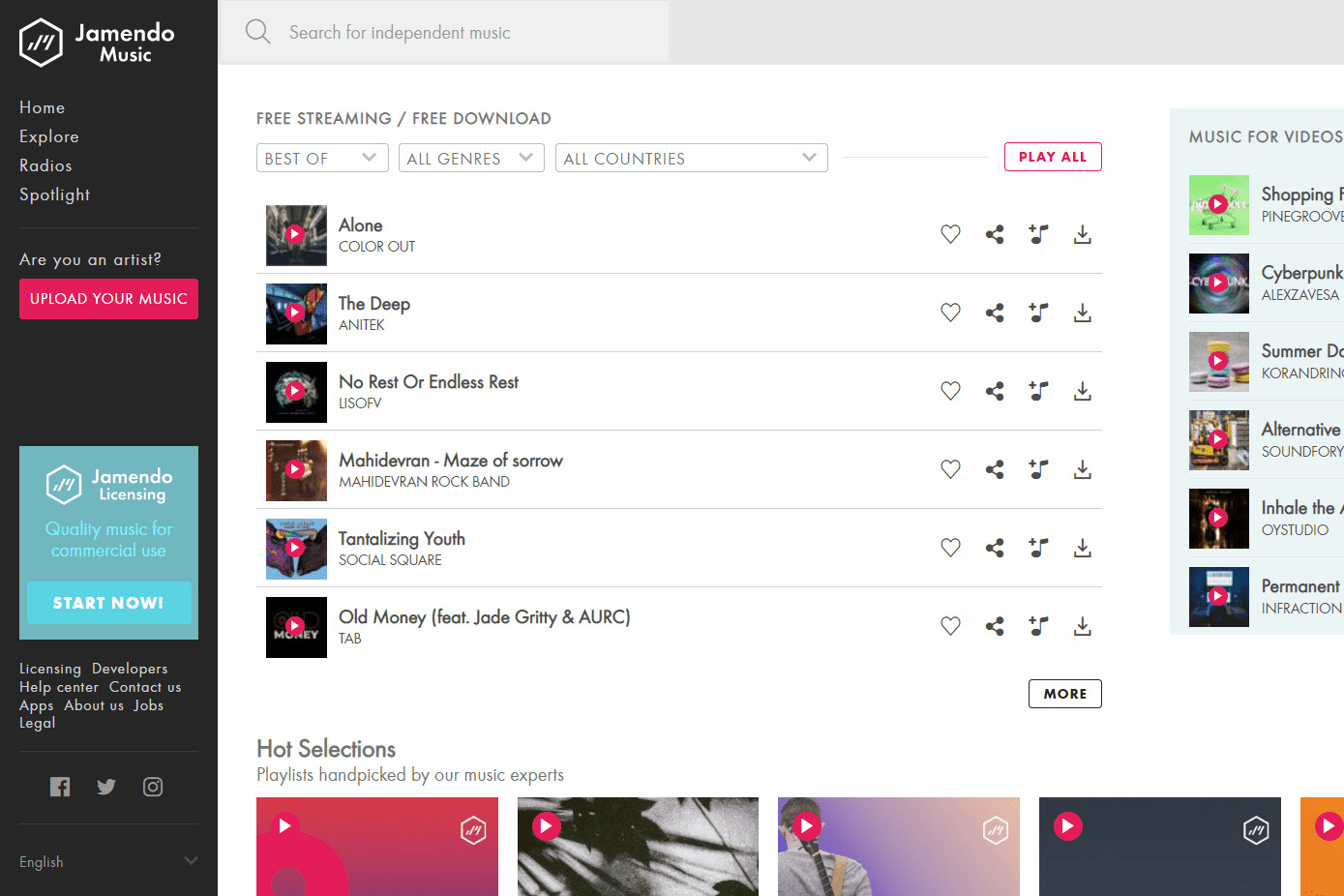Introduction
Welcome to the world of Procure-to-Pay (P2P) and cloud-based solutions. As businesses strive for efficiency, accuracy, and scalability in their procurement processes, the transition from traditional P2P systems to cloud-based platforms has become increasingly popular. This article aims to provide an insightful guide on how to convert P2P to cloud-based, highlighting the key advantages and considerations along the way.
P2P refers to the end-to-end process that organizations undertake to manage their procurement activities. It encompasses everything from requisitioning and purchasing to invoicing and payment. Historically, P2P systems were predominantly on-premises, requiring substantial IT infrastructure and maintenance. However, with the advent of cloud technology, businesses now have the opportunity to leverage the benefits of cloud-based P2P solutions.
Cloud-based P2P solutions, as the name suggests, are hosted and managed on remote servers. This eliminates the need for extensive in-house hardware, software, and IT support, as well as the associated costs. Instead, organizations can access these solutions through the internet, enabling greater flexibility, scalability, and ease of use.
The advantages of converting from P2P to cloud-based are numerous. First and foremost, cloud-based solutions offer increased accessibility. With the ability to access the system from anywhere, anytime, employees can perform procurement tasks conveniently, regardless of their location. This is particularly beneficial for organizations with multiple branches or remote teams, as it promotes collaboration and streamlines the overall procurement process.
Furthermore, cloud-based P2P solutions often incorporate built-in automation capabilities that enhance efficiency and accuracy. For example, requisitioning and approval workflows can be automated, reducing manual errors and speeding up the procurement cycle. Additionally, cloud-based platforms often provide real-time visibility into procurement data, enabling better decision-making and improved spend control.
Another advantage of cloud-based P2P solutions is their scalability. Traditional on-premises systems typically have limitations in terms of storage capacity and system performance. However, cloud-based solutions can easily scale up or down based on the organization’s needs, accommodating business growth or fluctuations in procurement activity.
As with any system migration, the process of converting from P2P to cloud-based involves careful planning and execution. It requires a thorough assessment of the current P2P system, selection of the appropriate cloud-based P2P solution, data migration, training and onboarding, integration with other systems, testing, and finally, the go-live transition.
Throughout this article, we will delve deeper into each step of the conversion process, providing practical tips and considerations to ensure a smooth and successful transition. So fasten your seatbelts and get ready to embark on the exciting journey of converting from P2P to cloud-based procurement. Let’s explore the world where efficiency meets innovation!
P2P vs Cloud Based: Understanding the Difference
Before diving into the conversion process, it is important to understand the fundamental differences between traditional P2P systems and cloud-based solutions. While both serve the purpose of managing procurement processes, their underlying technology and capabilities set them apart.
P2P systems, typically installed on-premises, rely on local servers and infrastructure to operate. They require dedicated IT resources for setup, maintenance, and support. These systems are often customized according to the organization’s specific requirements, which can lead to higher implementation costs and longer deployment timelines.
On the other hand, cloud-based P2P solutions operate entirely on remote servers, accessible via the internet. Organizations subscribe to these services on a pay-as-you-go basis, eliminating the need for upfront investments in hardware and software. Cloud-based solutions are typically deployed faster and offer greater flexibility, as they can be easily scaled up or down based on demand.
One of the key advantages of cloud-based P2P solutions is the ability to access the system from anywhere, at any time. This promotes collaboration among distributed teams and allows employees to perform procurement tasks remotely. In contrast, traditional P2P systems often require accessing the system through specific networks or VPNs, limiting accessibility.
Automation is another differentiating factor. Cloud-based P2P solutions often come with built-in automation features, such as automated requisition approvals, invoice matching, and payment processing. These features significantly reduce manual intervention, streamline the procurement cycle, and minimize errors. Traditional P2P systems, on the other hand, may require manual data entry and involve more manual steps, increasing the risk of errors and delays.
Scalability is crucial in today’s dynamic business environment. Traditional P2P systems may have limitations in terms of storage capacity, performance, and the ability to handle increasing transaction volumes. Cloud-based solutions, however, can easily scale up or down as per the organization’s needs, ensuring that procurement operations can adapt to business growth or fluctuations in demand.
Data security is a top priority for organizations in the digital age. While both P2P and cloud-based solutions have their security measures, cloud-based systems often have advanced security protocols in place, backed by dedicated IT teams. Cloud providers invest heavily in robust security infrastructure, including data encryption, firewalls, and access controls, to safeguard sensitive procurement data.
In summary, the shift from P2P to cloud-based procurement brings numerous advantages, including improved accessibility, automation capabilities, scalability, and enhanced security. Understanding these differences is crucial for organizations considering the conversion, as it provides a clear understanding of the benefits and impacts of adopting cloud-based P2P solutions.
Advantages of Converting P2P to Cloud Based
Converting from a traditional P2P system to a cloud-based solution offers organizations a wide range of advantages. These benefits extend beyond cost savings and convenience, revolutionizing the procurement process and improving overall operational efficiency. Let’s explore the key advantages of making this transition:
1. Cost Savings: Cloud-based P2P solutions eliminate the need for upfront investments in hardware, software licenses, and IT infrastructure. Instead, organizations pay a subscription fee based on usage, significantly reducing capital expenditure. Additionally, cloud-based solutions drive operational cost savings by streamlining procurement processes, reducing manual errors, and improving spend control.
2. Flexibility and Scalability: Cloud-based solutions provide the flexibility to scale up or down based on business needs. As organizations grow or experience fluctuations in procurement activity, they can easily adjust resources, storage, and user licenses, ensuring optimal operational efficiency and cost-effectiveness.
3. Enhanced Accessibility: Cloud-based P2P solutions can be accessed from anywhere, anytime, through internet-enabled devices. This allows employees to perform procurement tasks remotely, enabling collaboration among geographically dispersed teams and facilitating seamless workflow management.
4. Improved Efficiency: Cloud-based P2P solutions often incorporate automation capabilities that streamline procurement processes. Automated workflows for requisitioning, approvals, invoice matching, and payment processing reduce manual intervention, saving time and minimizing errors. This results in faster cycle times, improved productivity, and enhanced efficiency in the overall procurement function.
5. Real-Time Visibility: Cloud-based P2P platforms provide real-time visibility into procurement data. Organizations can quickly access and analyze information related to spend, supplier performance, and purchase history. This enables data-driven decision-making, improves spend control, and facilitates proactive supplier management.
6. Enhanced Collaboration and Communication: Cloud-based P2P solutions provide a centralized platform for procurement activities, facilitating collaboration and communication among stakeholders. Users can easily share information, track progress, and communicate in real-time, promoting transparency and efficient cross-functional coordination.
7. Advanced Analytics and Reporting: Cloud-based P2P solutions often offer advanced analytics and reporting capabilities, allowing organizations to gain insights into procurement trends, supplier performance, and cost-saving opportunities. These insights enable informed decision-making, identify areas for process improvement, and drive continuous optimization of procurement operations.
8. Data Security and Compliance: Cloud-based solutions typically feature robust security protocols and compliance measures. Cloud providers invest heavily in data encryption, firewalls, and access controls to safeguard sensitive procurement data. They also ensure compliance with industry standards and regulations, reducing the risk of data breaches and ensuring data integrity.
Converting from P2P to cloud-based procurement brings significant advantages that propel organizations towards greater operational efficiency, cost savings, and process optimization. By harnessing the power of the cloud, businesses can transform their procurement function and gain a competitive edge in today’s fast-paced and digitally-driven market.
Assessing Your Current P2P System
Before embarking on the journey of converting to a cloud-based P2P solution, it is essential to assess your current P2P system thoroughly. This assessment will help you understand its strengths, weaknesses, and areas for improvement. Here are some key factors to consider when evaluating your current P2P system:
1. Functionality: Assess the functionality of your current P2P system. Does it meet your organization’s procurement requirements? Identify any limitations or gaps in its capabilities, such as lack of automation, poor integration with other systems, or difficulties in generating comprehensive reports.
2. User Experience: Evaluate the user experience of your current P2P system. Are employees finding it intuitive and easy to use? Consider gathering feedback from users to identify any pain points or areas where the system may be causing inefficiencies or frustrations.
3. Integration: Examine how well your current P2P system integrates with other business systems, such as ERP or accounting software. Seamless integration is crucial for efficient data flow and eliminating manual data entry. Identify any integration challenges or limitations that may be hindering the overall procurement process.
4. Scalability: Consider the scalability of your current P2P system. Can it accommodate your organization’s growth plans? Evaluate whether the system can handle a higher volume of transactions, supplier relationships, and changing business needs. Determine if the system’s limitations may impede future expansion or cause inefficiencies.
5. Security: Assess the security measures implemented in your current P2P system. Is sensitive procurement data adequately protected? Evaluate the system’s security protocols, data encryption, access controls, and disaster recovery processes. Identify any potential vulnerabilities or compliance risks.
6. Reporting and Analytics: Determine how well your current P2P system provides visibility and insights into procurement activities. Evaluate the availability and accuracy of reports and analytics. Assess if the system provides comprehensive data for informed decision-making and identifying cost-saving opportunities.
7. Support and Maintenance: Evaluate the level of support and maintenance required for your current P2P system. Assess the responsiveness and expertise of the vendor’s support team. Consider the effort and resources needed to maintain and update the system, including software upgrades, bug fixes, and troubleshooting.
8. Cost-effectiveness: Consider the overall cost-effectiveness of your current P2P system. Evaluate the total cost of ownership, including licensing fees, hardware investments, IT support, and maintenance costs. Determine if the benefits derived from the system justify the expenses incurred.
By conducting a thorough assessment, you will gain valuable insights into your current P2P system’s strengths and weaknesses. This evaluation will serve as a foundation for selecting the most suitable cloud-based P2P solution and guiding the migration process. It will also enable you to identify specific areas for improvement and set realistic goals for the conversion.
Selecting a Cloud Based Procure-to-Pay Solution
Choosing the right cloud-based procure-to-pay (P2P) solution is crucial for a successful transition from a traditional P2P system. With numerous options available in the market, it’s essential to follow a methodical approach to select the solution that best aligns with your organization’s needs and goals. The following steps will guide you through the process of selecting a cloud-based P2P solution:
1. Define Requirements: Start by clearly defining your organization’s procurement requirements. Identify the key features and functionalities that are essential for your operations. Consider the specific needs of different user groups, such as requisitioners, approvers, and finance teams. Document your requirements to serve as a reference during the selection process.
2. Research and Shortlist: Conduct thorough research on available cloud-based P2P solutions. Analyze their features, capabilities, scalability, and compatibility with your existing systems. Look for solutions that have a proven track record, credible customer reviews, and positive industry recognition. Create a shortlist of solutions that align with your requirements.
3. Assess Vendor Credibility: Evaluate the credibility and financial stability of the P2P solution vendors. Consider their industry experience, customer base, and reputation. Assess their customer support and service level agreements (SLAs). Ensure that the vendor has a strong commitment to data security, compliance, and regular updates to the system.
4. Request Demos and Proof of Concept (POC): Arrange demos and request a proof of concept from the shortlisted vendors. This will allow you to visualize how the solution works and assess its usability and user experience. Customize the POC to reflect your organization’s specific scenarios and evaluate if the solution meets your functional and technical requirements.
5. Consider Integrations: Evaluate the integration capabilities of the cloud-based P2P solution with your existing systems such as ERP, accounting software, or supplier management tools. Seamless integration is vital for efficient data flow, reducing manual effort and ensuring data accuracy. Engage with the vendor to understand their integration capabilities and experience with similar systems.
6. Total Cost of Ownership (TCO): Consider the total cost of ownership for each shortlisted solution. Evaluate the pricing model, including subscription fees, implementation costs, customization charges, and ongoing support and maintenance costs. Assess the value proposition of each solution and compare it against its cost to determine its cost-effectiveness for your organization.
7. Vendor Support and Training: Consider the level of support and training provided by the vendors. Evaluate the responsiveness, expertise, and availability of their support teams. Inquire about the onboarding and training process for your users. A vendor that offers comprehensive support and training will ensure a smooth transition and ongoing success with the new cloud-based P2P solution.
8. Consider Future Needs: Anticipate your organization’s future needs and growth plans. Evaluate if the cloud-based P2P solution can scale along with your organization’s expanding procurement requirements. Consider the vendor’s product roadmap and their commitment to innovation and continuous improvements. Choose a solution that can support your long-term goals and adapt to changing business needs.
By following these steps, you can confidently select a cloud-based P2P solution that aligns with your organization’s requirements, offers scalability, and ensures a seamless transition. Remember, the right solution will streamline your procurement processes, drive efficiency, and enable effective management of your organization’s end-to-end procurement lifecycle.
Data Migration: Moving from P2P to Cloud Based
Migrating data from your current P2P system to a cloud-based procure-to-pay (P2P) solution is a critical step in the conversion process. It involves transferring all relevant procurement data, including vendor information, purchase orders, invoices, payment records, and historical data, to the new cloud-based system. Here’s a step-by-step guide to ensure a successful data migration:
1. Data Assessment and Cleanup: Begin by assessing the quality and completeness of your existing data. Identify any duplicate or outdated records, incorrect formatting, or missing information. Cleanse the data by removing duplicates, consolidating relevant records, and validating the accuracy of the data.
2. Data Mapping: Map the fields and data structures of your current P2P system to the corresponding fields in the cloud-based P2P solution. This process ensures that data from the source system can be accurately mapped and migrated to the appropriate fields in the new system. Maintain documentation of the data mappings for reference during the migration process.
3. Extract Data: Extract the data from your current P2P system based on the defined data mapping. Export the data in a format that is compatible with the import requirements of the cloud-based P2P solution. Ensure data integrity during the extraction process to minimize data loss or corruption.
4. Data Transformation: Transform the extracted data as required to meet the data format and structure of the cloud-based P2P solution. This may involve reformatting data, converting file types, or performing data validations to ensure the accuracy and consistency of the migrated data.
5. Data Import: Import the transformed data into the cloud-based P2P solution. Pay attention to the import instructions provided by the solution vendor and follow the recommended data import procedures. Validate the data after import to ensure its completeness and integrity in the new system.
6. Data Verification and Testing: Thoroughly verify and test the migrated data in the cloud-based P2P solution. Validate that all critical data elements, such as vendor details, purchase orders, and invoices, have been successfully migrated and are accessible. Conduct test transactions, run reports, and perform data reconciliation to ensure the accuracy of the migrated data.
7. Data Cleansing and Error Resolution: Address any data cleansing and error resolution tasks identified during the verification and testing phase. Rectify any data inconsistencies, resolve import errors, and ensure data integrity throughout the system. Collaborate with relevant stakeholders to rectify any data-related issues and ensure a clean and accurate dataset in the new system.
8. Data Retention and Archival: Establish appropriate data retention and archival policies for your old P2P system. Determine which data needs to be retained for legal, compliance, or historical purposes. Safely archive the relevant data, ensuring compliance with data protection and privacy regulations.
Successful data migration is crucial for a smooth transition to a cloud-based P2P solution. By following these steps, you can ensure the accurate transfer of your organization’s procurement data to the new system, preserving data integrity and maximizing the benefits of the cloud-based solution. Remember to thoroughly test and validate the migrated data before going live to mitigate any potential data-related issues.
Training and Onboarding for Cloud Based P2P
Once you have successfully migrated to a cloud-based procure-to-pay (P2P) solution, the next crucial step is to ensure proper training and onboarding for your team. Effective training and onboarding will empower users to leverage the full potential of the new system and maximize its benefits. Here are some key considerations for training and onboarding in a cloud-based P2P environment:
1. Develop a Training Plan: Start by developing a comprehensive training plan that outlines the key training objectives, target audience, training materials, and delivery methods. Consider different training approaches, such as classroom sessions, online tutorials, video demonstrations, and interactive workshops, to accommodate varied learning styles.
2. Tailor Training to User Roles: Customize training sessions based on different user roles and responsibilities within the P2P process. Requisitioners, approvers, accounts payable personnel, and administrators may require specific training on their respective functions and how to navigate the system efficiently. Tailoring the training will improve user engagement and ensure relevance.
3. Provide Hands-on Practice: Offer hands-on practice opportunities for users to familiarize themselves with the cloud-based P2P solution. Conduct real-life scenarios or simulations that replicate actual procure-to-pay processes. This will allow users to practice using the system, make mistakes in a safe environment, and gain confidence in their ability to perform their tasks effectively.
4. Offer Ongoing Support: Establish a support system to assist users during and after the training period. Designate a helpdesk or support team that users can reach out to for any questions, concerns, or technical issues. Provide user-friendly documentation, FAQ guides, and access to an online knowledge base to promote continuous learning and self-support.
5. Conduct Training at Different Levels: Consider offering training at different levels to accommodate both beginners and advanced users. Provide basic system navigation and functionality training for new users, followed by more advanced training on system customization, reporting, and analytics for experienced users. This approach ensures that all users can maximize their understanding and utilization of the cloud-based P2P solution.
6. Encourage Collaboration and Knowledge-Sharing: Foster a culture of collaboration and knowledge-sharing among users. Encourage users to share their insights, tips, and best practices with each other. Establish user forums, online communities, or regular team meetings to facilitate peer-to-peer learning and create a platform for users to exchange ideas and experiences.
7. Continuous Learning and Updates: Emphasize the importance of continuous learning and staying updated on system enhancements and new features. Encourage users to participate in webinars, online training sessions, or workshops offered by the cloud-based P2P solution provider. This will ensure that users are aware of system updates and can leverage new functionalities to optimize their procurement processes.
8. Solicit User Feedback: Periodically collect feedback from users regarding their experience with the cloud-based P2P solution and the training process. Create channels for users to provide feedback, suggestions, and improvement ideas. Actively listen to user input and make necessary adjustments to the training program or system configurations based on their feedback to enhance user satisfaction and system usability.
By prioritizing training and onboarding, you empower users to confidently utilize the cloud-based P2P solution, driving efficiency, accuracy, and productivity within your procurement processes. A well-trained and onboarded team ensures a successful transition and long-term utilization of the cloud-based P2P solution’s capabilities.
Integration: Connecting Cloud-Based P2P with Other Systems
Integration is a critical aspect when transitioning to a cloud-based procure-to-pay (P2P) solution. Connecting your cloud-based P2P system with other systems within your organization, such as ERP, accounting software, or supplier management tools, ensures seamless data flow and enables efficient end-to-end procurement processes. Here are some key considerations for integrating your cloud-based P2P system with other systems:
1. Identify Integration Needs: Begin by identifying the systems that need to be integrated with your cloud-based P2P solution. Assess the data and information that needs to be exchanged between these systems to drive operational efficiency. Determine the integration points and functionality required for smooth collaboration and data sharing.
2. Understand Integration Capabilities: Familiarize yourself with the integration capabilities and APIs (Application Programming Interfaces) provided by your cloud-based P2P solution. Understand how these APIs can be utilized to connect and exchange data with other systems. Assess if the APIs support real-time or batch integration and evaluate if they meet your integration requirements.
3. Define Data Mapping and Formats: Define the data mapping and formats required for the integration of your cloud-based P2P system with other systems. Ensure that the data elements, fields, and formats align between systems to enable accurate data transfer. Document the data mapping to ensure consistency and ease of implementation.
4. Establish Data Synchronization: Establish a data synchronization strategy to ensure that data remains consistent across all integrated systems. Define rules for data updates, inserts, and deletions to maintain data integrity. Identify any data conflicts or resolution workflows that may arise during the synchronization process.
5. Implement Integration Middleware: Consider implementing integration middleware or iPaaS (Integration Platform as a Service) solutions to simplify the integration process. Integration middleware acts as a bridge between your cloud-based P2P system and other systems, enabling easy data exchange, transformation, and synchronization. Evaluate the compatibility of potential middleware solutions with your systems and integration requirements.
6. Testing and Validation: Conduct thorough testing and validation of the integrations to ensure that data is accurately exchanged between systems. Test different integration scenarios, validate data mapping, and perform end-to-end testing to ensure smooth data flow and functionality across systems. Identify and rectify any integration issues or inconsistencies.
7. Establish Error Handling Mechanisms: Prepare error handling mechanisms to address any integration errors or exceptions. Establish processes to identify, monitor, and resolve integration errors in a timely manner. Set up notifications or alerts to notify relevant stakeholders when integration issues occur, allowing for prompt resolution and minimizing disruptions in the procurement process.
8. Provide User Training and Support: Train users on how to effectively utilize the integrated systems and navigate the workflows. Provide guidelines and support documentation to assist users in understanding the integration process and troubleshooting common integration-related issues. Offer ongoing support to address user queries and guide them in utilizing the integrated systems efficiently.
By successfully integrating your cloud-based P2P system with other systems, you can streamline data exchange, eliminate manual processes, and optimize operational efficiency. Integration facilitates seamless collaboration between systems, enables accurate and real-time data visibility, and empowers your organization to leverage the full potential of the cloud-based P2P solution.
Testing and Fine-tuning your Cloud Based P2P Solution
Once you have implemented your cloud-based procure-to-pay (P2P) solution and integrated it with other systems, it is essential to thoroughly test and fine-tune the system to ensure optimal performance and functionality. Testing and fine-tuning ensure that the solution aligns with your organization’s specific requirements and enables smooth procurement processes. Here are key steps to follow:
1. Test Data Integrity: Validate the accuracy and integrity of data entered or migrated into the cloud-based P2P solution. Verify that the data matches the source system and meets the desired format. Conduct tests across various data fields, such as supplier information, purchase orders, invoices, and payment records, to ensure consistency and data integrity.
2. Perform Workflow Testing: Test the end-to-end workflows within the cloud-based P2P solution. Follow the procurement process from requisition to approval, purchase order generation, receipt of goods, invoicing, and payment. Identify any bottlenecks, errors, or inefficiencies in the workflow and fine-tune the system accordingly to ensure smooth and streamlined operations.
3. Conduct User Acceptance Testing (UAT): Engage users in User Acceptance Testing. Allow them to simulate real-life procurement scenarios and evaluate their experience using the cloud-based P2P solution. Gather feedback regarding user-friendliness, ease of navigation, system response time, and overall user satisfaction. Address any usability concerns raised during UAT to enhance user experience.
4. Test Reporting and Analytics: Validate the accuracy and reliability of reporting and analytics capabilities within the cloud-based P2P solution. Run sample reports, analyze spend data, track supplier performance, and assess any custom reports or dashboards. Ensure that the solution provides relevant and actionable insights to support decision-making and facilitate continuous improvement.
5. Fine-tune Configurations: Assess system configurations and settings to align them with your organization’s specific needs. Fine-tune the configurations based on feedback from users and identified requirements. Adjust system parameters, approval workflows, access controls, and customization options to optimize the cloud-based P2P solution to meet your unique procurement processes.
6. Engage Key Stakeholders: Collaborate with key stakeholders, such as procurement teams, finance personnel, and IT support, to gather feedback and insights during testing and fine-tuning. Consider their expertise and perspectives to identify areas that require refinement, system enhancements, or further customizations. Involve stakeholders throughout the process to ensure broad alignment and a successful implementation.
7. Iterative Testing Approach: Adopt an iterative testing approach, focusing on incremental enhancements and continuous improvement. Establish regular testing cycles to address any identified issues, validate fixes, and optimize system configurations. This iterative approach allows for ongoing testing, adjustment, and fine-tuning to refine the cloud-based P2P solution over time.
8. Monitor Performance and Quality: Continuously monitor the performance and quality of the cloud-based P2P solution post-implementation. Monitor system response time, transaction success rates, and any performance bottlenecks. Periodically review system logs, conduct periodic audits, and engage in proactive troubleshooting to ensure optimal system performance and quality.
Thoroughly testing and fine-tuning your cloud-based P2P solution ensures that it meets your organization’s specific needs, enhances operational efficiency, and provides a seamless user experience. By addressing any identified issues and continuously refining the system, you set the foundation for a successful and sustainable procurement process in the cloud.
Go Live: Transitioning from P2P to Cloud Based
The go-live phase is the final step in the transition from a traditional P2P system to a cloud-based procure-to-pay (P2P) solution. It is a crucial stage where the new system is officially launched and becomes the primary platform for managing procurement activities. Here are key considerations for a successful go-live transition:
1. Communication and Training: Prioritize clear and effective communication to all stakeholders involved in the transition. Notify users of the go-live date and provide adequate time for them to prepare. Conduct refresher training sessions, share user guides, and provide resources that support a smooth transition from the old P2P system to the new cloud-based P2P solution.
2. Data Cutover: Plan and execute the cutover of live data from the old P2P system to the cloud-based solution. Ensure that all relevant data, including supplier information, open purchase orders, invoices, and payment records, is accurately migrated and accessible in the new system. Validate the integrity of the data during and after the cutover process.
3. Staggered Implementation: Consider implementing the cloud-based P2P solution in a phased or staggered approach. This allows for gradual adoption and reduces the risk of disruptions to procurement activities. Start with a pilot group or specific divisions, gather feedback, and make any necessary adjustments before rolling out the solution to the entire organization.
4. Change Management: Plan for change management to smooth the transition. Communicate the benefits of the cloud-based P2P solution to users and address any concerns or challenges they may have. Ensure that stakeholders understand the reasons for the transition and the positive impact it will have on their procurement processes. Assign change champions or internal advocates to support users through the transition.
5. Monitor and Address Issues: Anticipate and proactively monitor for any issues that may arise after going live. Establish a support system to address user questions or technical difficulties. Promptly address any issues to minimize disruptions and ensure a smooth transition. Leverage user feedback and ongoing testing to identify and resolve any remaining issues as quickly as possible.
6. Evaluate and Refine Processes: Continuously evaluate and refine your procurement processes in the cloud-based P2P solution post-implementation. Gather feedback from users, identify areas for improvement, and implement necessary changes. Regularly review system performance, user adoption rates, and key performance indicators to assess the effectiveness of the new solution and identify opportunities for optimization.
7. Phased Decommissioning: Consider a phased approach to decommissioning the old P2P system. Gradually reduce reliance on the old system as users become more comfortable with the cloud-based solution. Retain access to the old system for reference or historical data purposes, while fully transitioning users to the new cloud-based P2P solution.
8. Celebrate Success: Recognize and celebrate the successful implementation of the cloud-based P2P solution. Acknowledge the efforts of the implementation team, key stakeholders, and users who contributed to the smooth transition. Celebrating success fosters a positive attitude towards the new solution and encourages user engagement moving forward.
By effectively managing the go-live transition, organizations can ensure a successful shift from a traditional P2P system to a cloud-based P2P solution. Setting clear communication, executing a seamless data cutover, addressing user concerns, and continuously refining processes will enable organizations to unlock the full benefits of the new solution and optimize procurement operations in the cloud.
Monitoring and Continuous Improvement
After successfully implementing a cloud-based procure-to-pay (P2P) solution, it is essential to establish monitoring mechanisms and embrace a culture of continuous improvement. Monitoring the performance of the system, analyzing key metrics, and actively seeking opportunities for enhancement will ensure ongoing success and optimize procurement processes. Here are key considerations for monitoring and continuous improvement:
1. Establish Performance Metrics: Define key performance indicators (KPIs) to measure the effectiveness and efficiency of your cloud-based P2P solution. Consider metrics such as cycle time, cost savings, accuracy of data, supplier performance, and user satisfaction. These metrics provide quantifiable benchmarks and insights into the performance of your procurement processes.
2. Utilize Analytics and Reporting: Leverage the reporting and analytics capabilities of your cloud-based P2P solution to gain visibility into your procurement operations. Generate reports to track spend patterns, identify bottlenecks, and monitor performance against established KPIs. Analyze the data to uncover trends, make data-driven decisions, and identify areas for improvement.
3. Conduct Periodic Reviews: Regularly review the effectiveness of your procurement processes and the performance of the cloud-based P2P solution. Conduct periodic reviews with key stakeholders to assess system utilization, identify challenges, and solicit opportunities for improvement. Use this feedback to refine processes, address pain points, and optimize system configurations.
4. Engage Users: Maintain open lines of communication with users of the cloud-based P2P solution. Seek their feedback, opinions, and suggestions for improvement. Encourage users to share their experiences, challenges, and success stories related to the system. Engaging users fosters a sense of ownership, promotes user adoption, and enhances user satisfaction.
5. Continuously Train and Educate: Provide ongoing training and education to users on the functionalities and features of the cloud-based P2P solution. Offer refresher sessions, webinars, or online resources to keep users informed about system updates, new features, and best practices. Invest in user training to ensure that they are fully equipped to maximize the potential of the solution.
6. Foster Collaboration and Knowledge Sharing: Create opportunities for collaboration and knowledge sharing among users of the cloud-based P2P solution. Establish user forums, internal communities, or workshops where users can exchange experiences, share insights, and learn from one another. Encouraging collaboration allows for the dissemination of best practices and the identification of innovative solutions.
7. Embrace Process Automation: Continuously evaluate and identify opportunities for process automation within your cloud-based P2P solution. Leverage automation to streamline repetitive tasks, reduce manual effort, and eliminate errors. Automating processes improves efficiency, frees up resources for higher-value activities, and enables better allocation of staff time.
8. Stay Updated with Industry Trends: Stay informed about emerging trends and advancements in the procurement and cloud technology space. Attend industry conferences, webinars, or trade shows to learn about new features, functionalities, and emerging best practices. Engage with industry experts and solution providers to stay ahead of the curve and explore opportunities for innovation.
Monitoring and continuous improvement are essential for maintaining the effectiveness and maximizing the benefits of a cloud-based P2P solution. By implementing a proactive approach, embracing user feedback, and continuously refining processes, organizations can drive ongoing success, achieve greater efficiency, and continuously optimize their procurement operations.
Conclusion
The transition from a traditional Procure-to-Pay (P2P) system to a cloud-based solution offers organizations numerous advantages in terms of efficiency, scalability, accessibility, and cost savings. By following a systematic and well-planned approach, businesses can successfully convert to a cloud-based P2P system and unlock its full potential.
Throughout the conversion process, various steps were covered, including assessing the current P2P system, selecting the right cloud-based solution, migrating data, providing training and onboarding, integrating with other systems, testing and fine-tuning, and finally transitioning to the cloud-based solution through the go-live phase.
Assessing the current P2P system provides a comprehensive understanding of its functionality, user experience, integration capabilities, and scalability. This evaluation aids in selecting a suitable cloud-based solution that aligns with the organization’s requirements, while considering factors such as cost, flexibility, and security.
Migrating data from the old system to the new cloud-based solution ensures the accurate transfer of procurement data, while training and onboarding equip users with the skills and knowledge to effectively utilize the new system. Integration with other systems enables seamless data exchange, streamlining processes and improving operational efficiency.
Testing and fine-tuning the cloud-based P2P solution ensures its optimal performance, accuracy, and user satisfaction. Vigilant monitoring and continuous improvement play a vital role in identifying areas for enhancement, leveraging analytics and reporting capabilities, and staying aligned with organizational goals and industry trends.
In conclusion, the transition from P2P to cloud-based procurement presents immense opportunities for organizations to streamline their procurement operations, drive efficiency, and achieve cost savings. By embracing the steps outlined in this guide, businesses can successfully convert to a cloud-based P2P system, maximizing its benefits and positioning themselves for continued success in a rapidly evolving digital landscape.

























